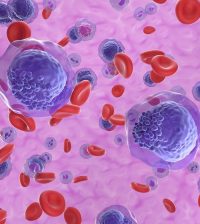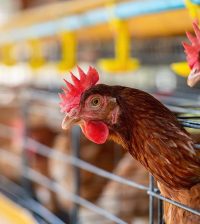- Understanding the Connection Between Anxiety and Depression
- How Daily Prunes Can Influence Cholesterol and Inflammation
- When to Take B12 for Better Absorption and Energy
- Epsom Salts: Health Benefits and Uses
- See What Saffron Can Do for Sleep and Heart Health
- 6 Common Mistakes to Avoid Before Your Physical
- Can Sweating Really Help You Beat a Cold?
- Strengthening Your Relationship: Practical Strategies
- Skip Storing This Everyday Product in the Fridge Door
- Green Tea + B3 Pairing May Boost Brain Health
Space Travel May Not Be Healthy for Heart Muscle
-300x336.jpeg)
Long-term space travel to Mars could be bad for astronauts’ hearts, a new zero-gravity study shows.
After a month at the International Space Station, a set of 48 bioengineered human heart tissue samples beat about half as strong as similar tissues that remained on Earth.
The tissues also became weaker and started showing genetic evidence of inflammation and oxidative damage that are hallmarks of heart disease, researchers reported Sept. 23 in the Proceedings of the National Academy of Sciences.
“Many of these markers of oxidative damage and inflammation are consistently demonstrated in post-flight checks of astronauts,” added researcher Devin Mair, a postdoctoral fellow at Johns Hopkins Medicine in Baltimore.
Previous studies have shown that some astronauts return to Earth with reduced heart muscle function and irregular heartbeats, researchers said. Some, but not all, of these effects dissipate over time following their return.
Missions to Mars could mean as much as two years spent in space, making it crucial that doctors better understand the effects of weightlessness on heart function, researchers said.
For the study, researchers used stem cells to create a set of heart muscle cells, called cardiomyocytes.
The team then placed the heart muscle tissues into a chip that strings the tissues between two posts, to collect data about how the tissues beat. The resulting chambers were about half the size of a cell phone.
“An incredible amount of cutting-edge technology in the areas of stem cell and tissue engineering, biosensors and bioelectronics, and micro-fabrication went into ensuring the viability of these tissues in space,” said project leader Deok-Ho Kim, a professor of biomedical engineering and medicine at Johns Hopkins Medicine.
A SpaceX mission took the heart tissues into space in March 2020. Once they safely reached the space station, scientists received real-time data for 10 seconds every half-hour about the cells’ strength of contraction and beating patterns.
Astronaut Jessica Meir changed the liquid nutrients surrounding the tissues once a week, and preserved tissues for later genetic and imaging analysis.
When the tissue chambers returned to earth, researchers continued to track their progress. They also were compared to tissues developed from the same source and maintained in an Earthbound laboratory.
The heart muscle tissues in space became weaker, and also developed irregular beating, researchers said.
The tissues developed a delay between beats about five times longer that the normal delay of around a second, researchers said. The time between beats returned nearly to normal following their return to Earth.
The protein bundles in muscle cells that help them contract, called sarcomeres, also became shorter and more disordered in the space-bound heart tissue samples. This is a hallmark of human heart disease, researchers noted.
Other abnormalities developed in the energy-producing mitochondria in the tissue samples, as well as in genetic markers for inflammation and oxidative damage.
A second batch of bioengineered heart tissue samples went to the space station in 2023 to test drugs that may protect them from the effects of low gravity. That study is ongoing, researchers said.
The researchers also continue to improve their heart tissue chip system, and are studying the effects of space radiation on human heart tissues.
More information
NASA has more on the human body in space.
SOURCE: Johns Hopkins Medicine, news release, Sept. 23, 2024
Source: HealthDay
Copyright © 2026 HealthDay. All rights reserved.










